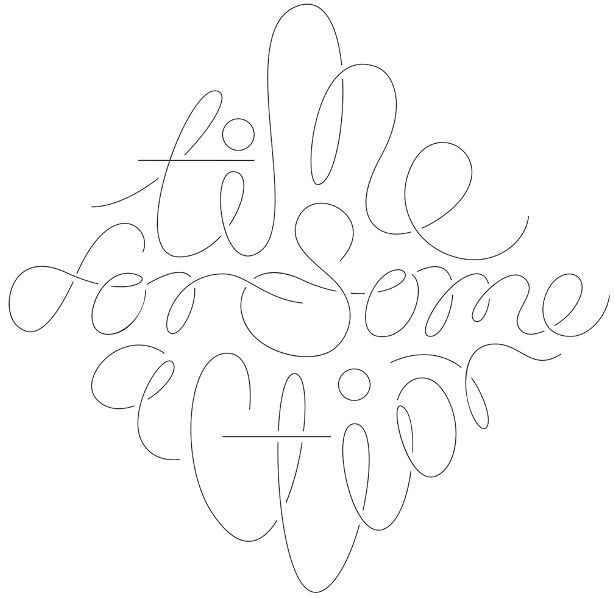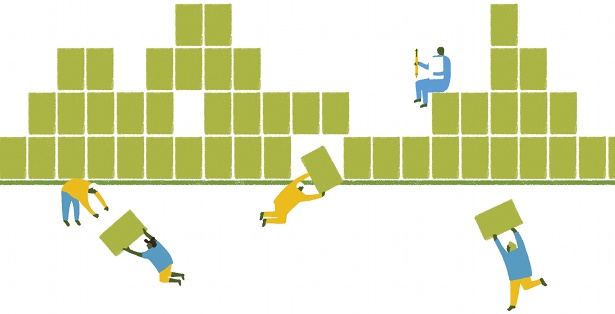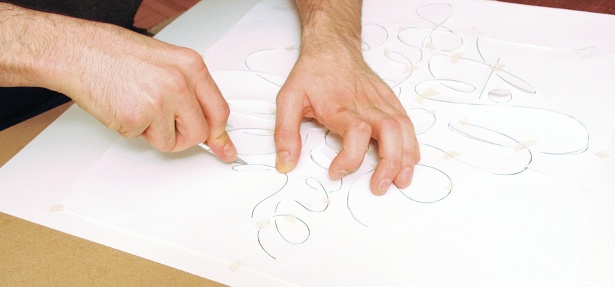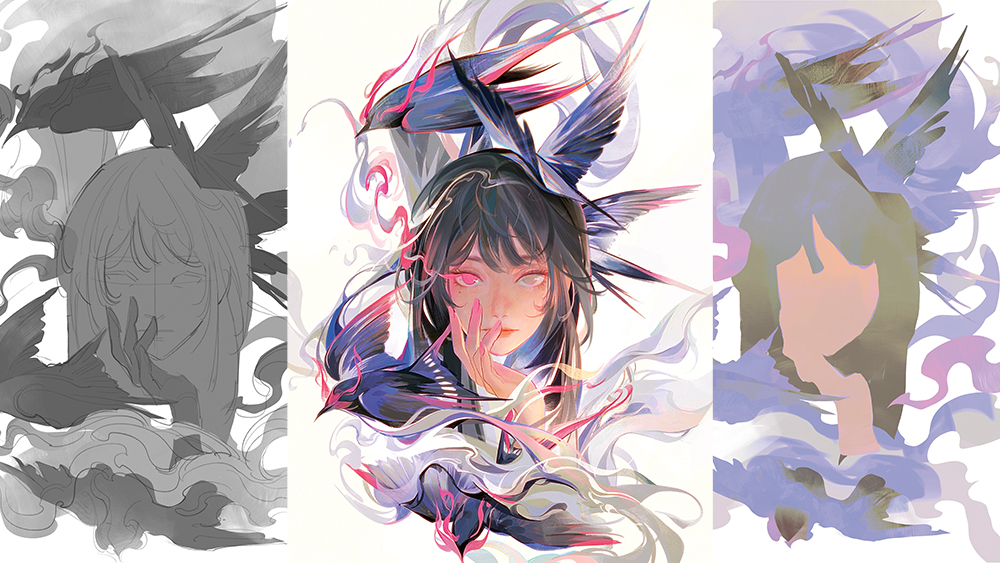Tyler Galpin on ditching banking for design
Lost Type Co-op co-founder Tyler Galpin nearly ended up a banker rather than a designer. He chats to Martin Cooper about pivot tables, geometric typefaces and the after-effects of facial dog bites
This article first appeared in issue 241 of .net magazine – the world's best-selling magazine for web designers and developers.
.net: Who are you, Tyler Galpin?
TG: I’m a product and interface designer residing in Toronto. I’m building RadPad, and previously worked for MetaLab and FTW. I’ve had the privilege of working with clients across the globe, from Silicon Valley to Scandinavia.
.net: Web design: was there some kind of eureka moment when you decided: ‘This is for me’?
TG: Yes. For years, design was a hobby: something I did for enjoyment on my downtime from school and work. In 2010, I was on summer break from a top Canadian business school, and working as a financial analyst at a major bank. Andrew Wilkinson got me freelancing for [his agency] MetaLab. Every time we talked he would suggest that I leave university and come work for MetaLab, and every time I shot the idea down as ridiculous. My mind was made up: I was going to be a banker and there was no money in design. One of my last days in the summer, I was sitting in my depressing, grey cubicle and I get handed a page document over 600 pages long that needs to be organised into pivot tables in Excel. This wasn’t the glamorous career I had envisioned myself doing. So I dropped out that very night and worked at MetaLab before eventually leaving to run my freelancing business. I haven’t looked back since.

.net: Are you self-taught or formally trained?
TG: I’m self-taught: a wild combination of design literature, Photoshop experimentation, tutorials on the web and lots of luck. I took one art class (introduction to art in high school) and confirmed I was terrible at drawing. Making art on the computer allowed me to make mistakes and create quickly without worry. Putting off schoolwork and procrastinating helped fuel my passion to be a better designer. The realisation that I wanted to be a designer surfaced when I became acutely aware I was spending my time learning and practicing my design skills instead of building financial models for class homework. I grew a lot during those years.
.net: So, how would you describe your style?
TG: People sometimes refer to it as ‘retro’ design, and I kind of reject that. I use great design from the past as inspiration to inform the design of present. So much of the web feels cold and lifeless. I try to inject feeling and humanity to it where necessary. Techniques like hand-drawn type and textures help achieve that. It’s like remixing classic material into something fresh, yet strangely familiar. Nostalgia is a difficult but powerful emotion to manipulate.
.net: What inspires your work?
TG: The geometric typefaces and bold colours that dominated design 30 or more years ago: there’s a utility to these no-nonsense, purpose-built North American relics – such as old railway logos. Music is a big part of my design process and I find that the right artist or song in the perfect moment can kickstart my brain, whether that’s Artie Shaw or Notorious B.I.G. Typography and shape study are also things I explore frequently. A typeface can be startlingly perfect for guiding your work or project, so I’m always hunting the obscure and forgotten.
.net: Picking up on the industrial theme, what’s your manufacturing process?
TG: Pen and paper is so liberating: no keyboard shortcuts, notifications or restrictions to hinder ideas. I always start by jotting down design requirements, and move to creating crude high-level wireframes that are purposed to capture what I’m thinking before I forget. Then I’ll switch to Photoshop where I can extrapolate on the ideas floating in my head – it’s always been an amazing tool for building different concepts that pen and paper just can’t execute.
.net: The designers I meet seem always to carry notepads and greedily collect ideas. Do you have some kind of idea treasure trove?
TG: I have a rotation of four or five Field Notes notebooks that float between my desk and my bag. Each one is for a different thing: RadPad, miscellaneous work, personal projects – and a second notebook for RadPad since I usually misplace the other notebook for hours or days at a time. I’m not sure I’d call them treasure troves, but they are excellent for storing unique ideas/thoughts that can be used in the future. It’s important to look back on concepts that never made it to fruition and adapt them to suit the needs of the present.

.net: Can you tell us about the Lost Type Co-op?
TG: The Lost Type Co-op was a fun side-project that Riley Cran and myself embarked upon on a whim. Its original purpose was to design and distribute a typeface called Muncie. The community response was incredible, and we molded the idea into a fully fledged type foundry with a twist: the fonts would be free, but you could pay what you wished. Radiohead had tried that model with the release of In Rainbows, to some success. When you make it easy to acquire desired goods (well-designed typefaces), piracy is no longer an issue and people will voluntarily part ways with their hard-earned money. The actual percentage of those who choose to donate money to font designers is low, but the overall volume is quite high. The community has really embraced the project.
.net: You’re freelance. Have you ever been tempted to join a big agency?
TG: I was freelance until RadPad became my primary focus six months ago. At one point I was at MetaLab for five months: that’s my only taste of the agency life. Client work and I have a on-and-off-again relationship. I enjoy how varied each project is and the challenges that come along with it, but I find that spending time working on other people’s ideas isn’t as satisfying as working on my own. There’s nothing like going into work every day and investing in yourself. Being my own boss is exhilarating.
.net: How do you find work? Or does it find you?
TG: Due to an extraordinary stroke of luck, I haven’t ever had to set out looking for work. Referrals are powerful and they tend to consistently be one of my largest sources of work. Repeat business is also a significant avenue for me. If you put your heart into every project, big or small, clients notice. One thing I learned early on is that your connections are your biggest asset. Cultivating that network of people is incredibly important to career opportunities. Working very hard and doing great work also helps.
.net: Do you code – or feel the need to code?
TG: As a designer, you need to understand limitations in the development process. Knowledge of the technologies and languages your devs work with helps you convey ideas and prevent potential problems when it’s time to turn over a design. I’ve found practising development skills on personal projects is a perfect way to learn. But development is a very specialised field, and I turn over my designs to talented folks who are experts on the frontend.
.net: What are you working on?
TG: The best way to find or list a place with my talented colleagues at RadPad. As someone who has moved seven times in six years, I can tell you firsthand that moving sucks; but it doesn’t have to. The rental marketplace is inefficient and RadPad is trying to help landlords manage and market properties. The current options for renters are inherently flawed in that they’re built on top of broken systems. In order to truly make a change, RadPad has to alter landlords’ behaviour in the market. We’ve got some big things up our sleeves to make this happen, and can’t wait to show off what we’ve been cooking up.

.net: Around the web, who is inspiring you?
TG: Ben Pieratt is doing interesting things and deserves a follow. The guys at Fictive Kin, in particular Cameron Koczon, Chris Shiflett and Simon Collison, are worth watching.
.net: What’s the key to staying creative?
TG: Making sure you’re not being pigeonholed into one style of design is a big one. Be ambitious. Be brazen. Attempt projects you normally wouldn’t tackle. The most rewarding things in life happen when you take huge risks, so challenging yourself in new environments helps inspire. Get outside the office and explore your city. Learn to cook or find something else that allows you to experiment without having to sit in front of a computer.
.net: What’s the biggest thing that’s bitten you?
TG: On my 16th birthday, a dog jumped up from the ground and went for my neck. One of the canine teeth made it into my jaw area but I reacted in time and pushed it off. Blowing out your birthday candles with a big bandaid on your face is as stupid-looking as it sounds.
On a serious note, I was involved with an organisation where the founder and I had very different opinions on company direction, most of which didn’t surface until late in the process. The project ended up floundering because of failed strategic decisions and a lack of traction. I learned the hard way that you need to trust your gut and heed the red flags early on before it’s too late.
Discover 15 amazing examples of experimental design at Creative Bloq.
Daily design news, reviews, how-tos and more, as picked by the editors.

The Creative Bloq team is made up of a group of art and design enthusiasts, and has changed and evolved since Creative Bloq began back in 2012. The current website team consists of eight full-time members of staff: Editor Georgia Coggan, Deputy Editor Rosie Hilder, Ecommerce Editor Beren Neale, Senior News Editor Daniel Piper, Editor, Digital Art and 3D Ian Dean, Tech Reviews Editor Erlingur Einarsson, Ecommerce Writer Beth Nicholls and Staff Writer Natalie Fear, as well as a roster of freelancers from around the world. The ImagineFX magazine team also pitch in, ensuring that content from leading digital art publication ImagineFX is represented on Creative Bloq.
